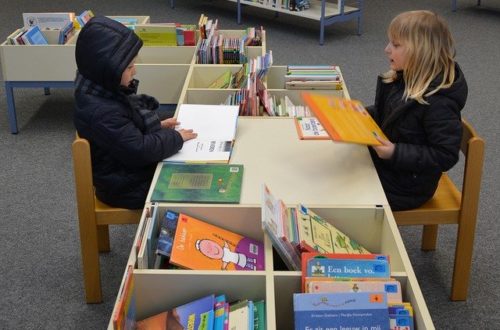The reading world was recently rocked by an article from esteemed reporter, Emily Hanford. The longtime maven of whole language, Lucy Calkins, admitted she needed to change her Units of Study after decades of context clues, guessing at words, picture walks, and dismissing the science of reading. Of course, Calkins promptly responded with a statement that essentially tried to take credit for always being a phonics-minded practitioner (despite a great deal of evidence to the contrary). When you look at the latest NAEP data, the influence of decades of whole language-oriented instruction being the dominant pedagogy in the United States is readily apparent. According to this new data, roughly 63% of our seniors in high school are reading well below average, and the numbers aren’t much better for math. Content created by constructivists such as Calkins, as well as that of the creators of Fountas and Pinnell and Reading Recovery, is supposedly child centric. What has resulted, however, is a focus on guiding children through their formative years without providing them the skills to be able to engage in the higher-level material that presents later in their careers. What we have are generations of high schoolers who head off to college or vocational training with a serious lack of training in crucial areas because they spent their childhood making dreamcatchers out of the phonemes (sounds) instead of mapping those sounds onto letters. If you’ve ever tried to teach a high schooler what two sounds a vowel makes, you’ll know that it is quite painful.
As a special education teacher, and now a private reading tutor on Zoom, I see a wide range of students of varying ages. I see the same general difficulties that include a lack of important, crucial foundational skills. If you don’t know what sound A makes, you very clearly cannot decode many words unless you memorize the shape of the word, or use some other parlor trick to avoid decoding the text. The constructivist/whole language approach doesn’t lead to good readers, it leads to good guessers, kids who rely on context clues, pictures, and initial sounds to guess at a word. It’s a habit that is very easy to instill in a five-year-old, and very hard to break in fourteen-year old. I tend to work with students who have dyslexia where this problem becomes even more exacerbated. Seeing this backward way of teaching reading in public schools, I used to think the only answer was to rely on the private, language-based learning difference programs that exist to help students who struggle with reading. More and more of them are starting to appear too, and some of them are quite prestigious.
I’ve had a change of heart in recent months, or at least I’m approaching the matter with less certainty, and more of a skeptic’s eye. I’ve been trying for months to puzzle out what the best solution is for struggling readers when the education system we have is built on a foundation that isn’t scientific or research-oriented––it’s an elaborate bureaucracy interwoven with belief in the idea that foundational skills will come naturally. This was a problem before COVID, and it is an even larger problem during this time. I’m going to try to avoid making any blanket statements because I haven’t visited every school, and been inside every classroom. Some programs work well in public and private settings, but I think it’s fair to point out that we wouldn’t be seeing such low numbers on our national report card (which are actually worse than they appear because students could receive accommodations for the testing) if things were overall going well.
Here in Massachusetts we have over eighty private and semi-private special education programs (766 Schools). The 766 programs are private, but because they accept public school students, they are entitled to state money to provide services that are assumed to be lacking in the public schools. Many families fight for months or even years to get their kids a placement at such a program thinking it will be a silver bullet. Some kids thrive and move on and are able to gain the skills they need, but there is also, despite the public funds, a clear lack of transparency in many such programs. If you go onto their sites it says evidence-based or dyslexia from corner to corner, but they don’t tell you exactly what programming they use, how they write their IEPs, or what the state testing results look like. Whereas public schools must share their testing results publicly, these programs, which are funded by the same taxpayer dollars, do not have to do so.
Many of these schools, which are supposed to offer improved, research-based programs for reading and foundational skills, as well as support for the students, are not necessarily providing these services, or not providing them in full. These schools aren’t really assessed on whether their programming is good so much as students are engaged (whatever that means) and whether they have a restraint policy in the case of more severe needs. The bureaucracy at work. There is not the same degree of oversight over such programs because they operate in their own little bubble. At a public school, for example, the schools must be able to prove that their teachers have the appropriate licensure, and degree of expertise, especially if they are working with a neurodiverse population that requires specialist intervention. A private, out of district placement is introduced when those interventions don’t work as what is billed as an upgrade in services. Teachers in these outside special ed programs don’t always have those credentials, and the implicit understanding is that the school will train these teachers in the appropriate interventions. But what if the school is not using the appropriate interventions? The people assessing whether or not a program meets the standards laid out in IDEA and ESSA are the same people who oversee the public school programming where Lucy Calkins and Fountas and Pinnell are the dominant instructional pedagogy. How would they know the difference between evidence-based, explicit instruction? There are state inspections to be sure, but if the inspectors don’t know how to differentiate between constructivist materials present in essentially every other school, how on earth are they going to know if the programming that taxpayers are handing out $40-100,00 tuitions for is any better or worse? In short, they can’t.
In some cases, students are forcibly placed in these private programs if a school can’t handle their needs. Mostly, however, parents have to fight school districts for a placement. The environments are smaller, and more nurturing in general, but there is no guarantee the teachers are any more knowledgeable in teaching reading, writing, and foundational skills. You get this placebo effect where the extra attention and accommodations appear to show growth. Any kid in a one-to-one setting is going make some changes because they are no longer in a group of five to thirty students competing for one person’s attention. If parents are getting equally problematic services, they will be unaware until it’s too late because the teachers are usually nicer, more attentive, and can do more for their students socially and emotionally than typical public schools have the time for. The IEPs often appear longer, with lots of padded material added to make it look like a more robust, complicated program. Appearances can be deceiving, and it’s important to look closely at the language of those goals and how measurable the skill is, or if we’re just going to go with a child aiming to be 80% proficient with their prosody (how they express language…like making a cowboy voice when reading a cowboy character). After the wounds of reading failure, and depression have been ameliorated, however, who teaches these kids the skills they came to learn in the first place. If socializing and a friendly environment were the only keys to literacy, we wouldn’t be staring down the barrel of 63% of seniors being functionally illiterate nationwide, and districts wouldn’t be asked to pay tuition for what is supposed to be a free and appropriate education.
Getting on Instagram for the first time or having texting buddies doesn’t mean you can decode the text in a book or the driver’s ed test. Students frequently leave these programs unprepared for the world outside the bubble, and at that point the marketing that trumpeted incredible results within a caring community shifts to more modest expectations. We go from expecting grade level equivalency to settling for 100-130 something words read in a minute, or decent skills in math. These kids will probably be able to make a power point, but they just won’t be fluent readers, and they won’t be able to layer working memory with content knowledge. In other words, they won’t be able to make the crucial gains in skills demanded by the wider world. Success will be difficult to achieve. By success I don’t mean every kid needs to become a lawyer or a doctor or president. I simply mean these students need to be successful on their own terms, and feel a real sense of confidence and pride in their abilities because they know they can do something. They should be able to function and think critically enough so they can hold a job that they want, have a family, fulfill basic societal obligations, and be able to have choices and options in their lives. Literacy has also become one of the big obstacles between escaping poverty, and being able to live comfortably. Literacy is a part of every aspect of society in some way, and every student deserves to have a chance to have the life they want. Suddenly, standing on the threshold of the bubble, these students are being asked to make do and stick with the limited gains they have met under similar or identical programming as the schools they left to find better opportunities in the first place.
The data that comes out of many of these private enterprises only show which students go on to college and post secondary programs, but it leaves out all of the students who drop out after the first semester because they are unprepared. Progress monitoring data is likewise, kept out of public view, and sometimes doesn’t even exist. An established system such as AIMSweb or FASTBridge should be in place for each student so we can measure their skills using norm and criterion referenced measures, and just see on an empirical level whether they are making gains in the areas they need to make gains. Otherwise, the only time it will be possible to truly independently track progress is when students go for their three year evaluations and gets tests such as the KTEA and the CTOPP and the WISC. Parents really shouldn’t have to wait for three year stretches to know what’s going on, especially if some skills still need attention. A stack of homework assignments from Teachers Pay Teachers or an assortment of worksheets do not qualify as progress monitoring. Parents will be getting teacher-opinion based progress reports, and they will get non-norm referenced data from say an online program like LEXIA or IXL for math, but this data only tells us how well a student is doing in that particular context, not overall what is going on. The last thing you want is for a student to reach junior year and find out that a skill that should’ve been taught in kindergarten is still oppressively low, and still needs attention. I can speak from experience that working with older students on a skill this low-level when they are on the cusp of adulthood is very difficult and very unpleasant for the student and the teacher. It’s not an uncommon story. NAEP’s report card certainly tells us how common this problem is.
Given the lack of oversight, and the lack of accountability with state funds, what we’re talking about is a system of many private schools collecting public funds while they are not being honest with families by promising them services that they are not providing. Again, this is not every program, not every teacher, and not every student’s experience. The need for these programs is, in and of itself, a symptom of a larger systematic problem caused by whole language and other constructivist programming that teaches its teachers and students that reading, and other foundational skills, are natural and will come naturally so long as we focus on individual interests. There is nothing wrong with following your passions as a student, but it’s important to have a solid foundation to pursue those interests so you don’t have to slog through reading a book or deciphering the numbers on your taxes, or doing basic arithmetic five or six times to get it right. We shouldn’t need to rely on a private institution to solve our problems when the solutions are very simple. In fact, we are creating more problems by relying on a system that is often more interested in retaining students to keep the cash flow coming than it is in developing interventions that work. We need to fix the underlying mechanisms that make our system broken, and we can do that because we have the research and the data and the programming to make it work.




